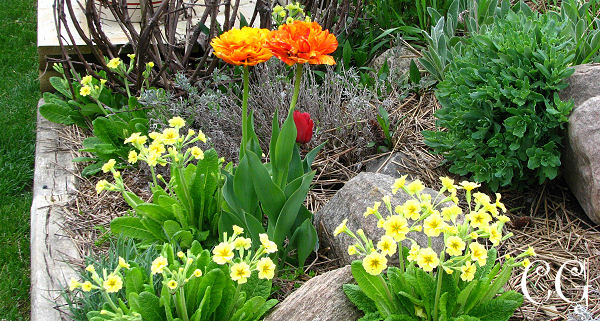New for 2026: Gardening Updates & Guides
🌿 Check out new cards and updated pages for easy-accessible, climate and container gardening - all in one place.
Garden Content - Nursery Beds
Saves Time & Money
I used to start many seeds under grow lights or in containers, but over time I realized that many of the plants I love — like self-seeders and hardy perennials — did just fine on their own. A dedicated nursery bed wasn’t just convenient: it respected the plants’ natural timing and produced stronger, more resilient starters. This page explains not only how to make a nursery bed, but why you might choose it over other methods in a Canadian climate.

How to start a Nursery Bed?
Years ago I wanted a Nursery Bed, but I never seem to get around to it. Then I decided to work smarter and not harder and hence the Nursery Bed. Most of the time I would plant my clippings, divisions and sow my seed on the edge of my flowerbeds and then get busy and forget that my plants were depending on me to be watered.
How do you prepare a Nursery Bed?
Start by designating a bright spot, but not in the hot sun, in the garden to be used
just for a nursery bed.
If you only have a hot, sunny spot, cover the soil with branches or shade cloth.
Till the soil well and dig in a generous amount of compost, peat moss, sand and leaf
mold if you have any.
Level the bed well for seed sowing. Keep the bed evenly moist until germination or
growth occurs.
What do I use my Nursery Beds for:
I mostly use them for sowing Perennial Plant seeds. Propagating Boxwood, Sedums, Hydrangeas, Roses, Ferns, Hostas and experimenting. I have many times tried to propagate Japanese Maple Trees to no avail.
Advantages of having Nursery Beds?
It saves a lot of money on plants and time.
I can propagate or sow as many plants and seeds as I want and I only have one place to
water.
I usually leave a full watering can near the Nursery Bed as well. If they need a drink
it's easy to oblige.
When my plants are big enough, I transplant them somewhere in the garden where they will
continue to grow.
| Method | Best For | Trade-offs |
|---|---|---|
| Nursery Bed | Perennials, self-seeders, plants that benefit from outdoor conditions | No protection from extremes; strong plants |
| Indoor Grow Lights | Annuals, long-season veggies, tender plants | Extra cost + labour; can produce spindly growth |
| Direct Sow | Hardy self-seeders, cold-stratifying seeds | Less control over timing; depends on weather |
Disadvantages of having Nursery Beds?
I can't think of any.
Maybe if you are short on space.
However, I think the advantages of having a designated space for experimenting,
propagating and sowing in just one spot makes it all worth it.
A cold frame will work. I don't have one of those yet. :)
My Woodland Shade
Garden ||
Growing Food ||
Perennial
Gardening
Container Gardening ||
Flower Gardening ||
Gardening
Weather Folklore & Sayings